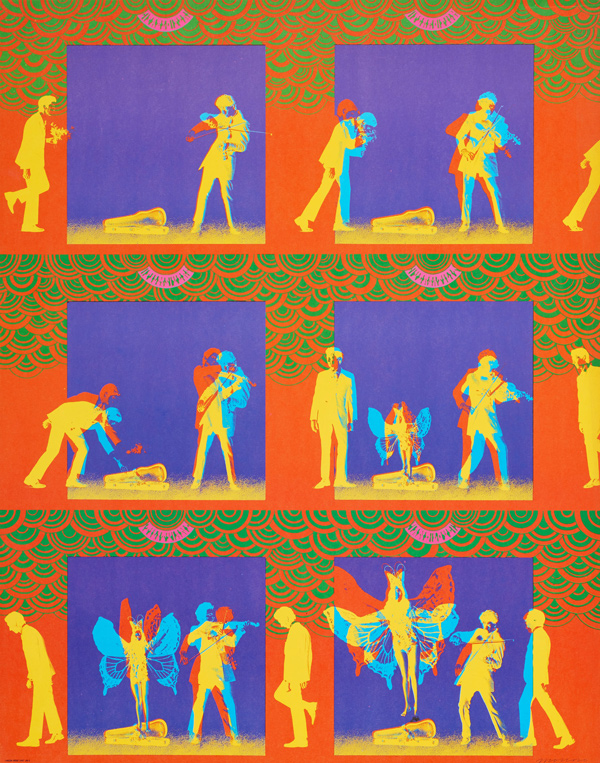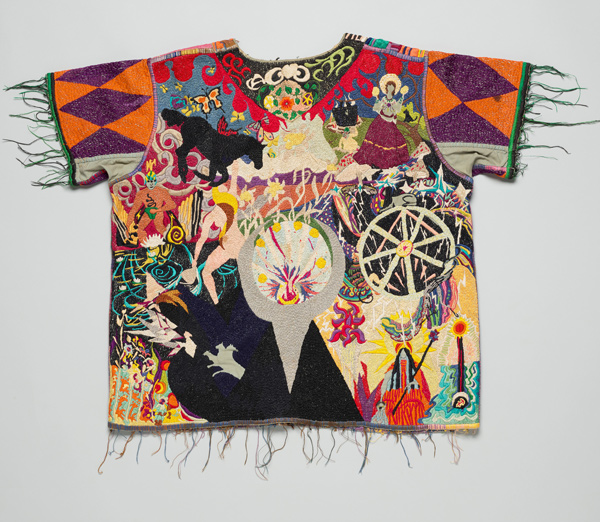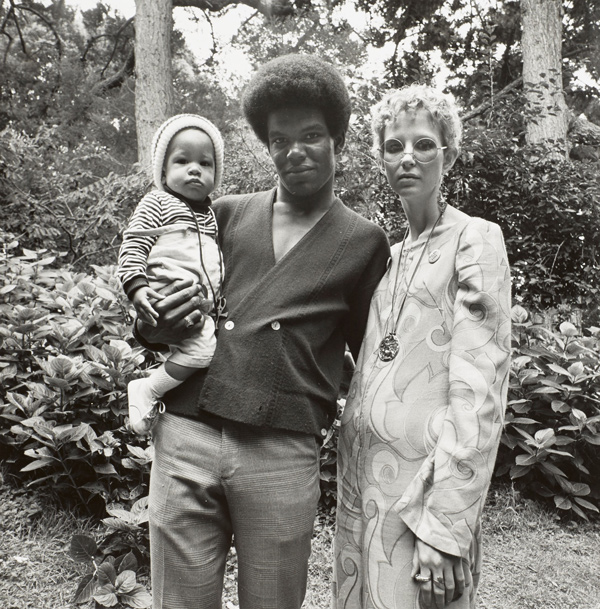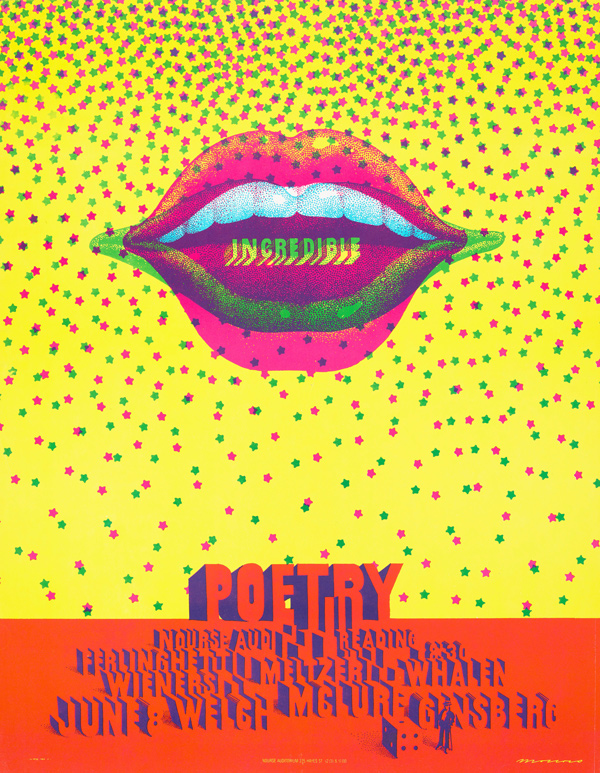When I moved to San Francisco to begin college nearly a decade ago, the refrain from Scott McKenzie’s 1967 hippie anthem “San Francisco” rang through my ears, beckoning me to the city by the bay with dreams of “flowers in my hair,” but I quickly learned that much had changed since the late 1960s. So I was curious to visit the “Summer of Love” exhibit at de Young museum, nestled in Golden Gate Park, birthplace of “the hippie.”

Victor Moscoso, Pablo Ferro film advertisement, 1967. Color offset lithograph “animated” poster. Haight Street Art Center. © Victor Moscoso Image Courtesy of the Fine Arts Museums of San Francisco
The show promises a trip down memory lane for baby boomers, and a showcase celebrating the art and aesthetics of the San Francisco counterculture of 1967—exactly 50 years later. The exhibition is curated by Jill D’Alessandro and Colleen Terry of the Achenbach Foundation of Graphic Arts at the Fine Arts Museums of San Francisco, with contributions by Julian Cox, chief curator of photography at the Fine Arts Museums of San Francisco.
The viewer is taken on a journey through the ideals and history of the hippie movement with over 400 artifacts presenting the music, fashion, poetry, poster art, light art, film and photography of the time. Psychedelic posters and mock school certificates crafted by Ken Kesey’s Merry Pranksters ask, “Can You Pass the Acid Test?” Mannequins carefully poised throughout the show adorn handmade outfits that demonstrate how every aspect of life in this time period provided opportunities for exploration of the self and innovations for society at large.

Embroidered hospital scrub top, ca. 1968. Cotton plain weave with cotton embroidery (bullion knots, encroaching satin, fly, running, and satin stitches). Collection of Arthur Leeper and Cynthia Shaver Image Courtesy of the Fine Arts Museums of San Francisco
A canon of symbols emerges from the art, ripe with sexual innuendos, nudity, depictions of Earth’s elements, and scenes from the American West. Much of the art was steeped in Native American culture, along with patterns and colors drawn from South American and Eastern cultures—all framed against a psychedelic cacophony of neon colors, shapes and patterns, engaging the senses particularly heightened by LSD, THE drug of choice; strangely, there was a glaring absence of peace signs, flowers and paisleys.
The self-proclaimed “Hippies of Haight” forged a sovereign state within the borders of San Francisco, ruled by their own social mores, run by a barter economy, and complete with its own language, fashion and public ceremonial rituals. The intricate, nearly illegible poster art displayed across the city held coded signs, sending messages that only those within the movement could comprehend.
One poster created by Rick Griffin, of a Native American on a horse with guitar in hand, advertises 1967s historic “Human Be-in” at which a “Gathering of the Tribes” was intended to bring together the intellectual activists of Berkeley with the free-love Haight Hippies in one event. This intersection of the different subcultures of the late ’60s blooming in the Bay Area is fascinating and opens up many intriguing questions, which the exhibit fails to really answer.

Elaine Mayes, “Couple with Child, Golden Gate Park, San Francisco,” 1968. Gelatin silver print. Courtesy of Joseph Bellows Gallery. Image Courtesy of the Fine Arts Museums of San Francisco
Outside the entrance to the de Young, mock street signs annotate intersections from the past to the present, including “Free Love” juxtaposed with “Marriage Equality,” “Hipster” with “Hippie” and “Civil Rights Movement” with “Black Lives Matter.” These seem to suggest that the hippie culture of 1967 largely paved the way for key aspects of modern society. The exhibition itself, however, lacks any real proof of these overarching claims, providing only one small room that speaks to the “activism” of the time—the Black Panthers, the Civil Rights Movement and Women’s Lib—reduced to two or three posters each. To blanket these several movements within the hippie lifestyle seems misleading, omitting the nuances of the divided subcultures that bloomed across America in the late ’60s.
While craft and creativity is evident, the exhibit left a bittersweet taste. After seven years as a San Francisco local, I am particularly sensitive to the gimmicky co-opting of the clothes and psychedelic art of the Haight Hippies to sell some cheesy sentiment of tripping out and being “groovy.” Walking down Haight Street today, head shops with neon colors painted on the wall selling shot glasses decorated with marijuana leaves are sad examples of this. A few short blocks over, you can visit “Hippie Hill” in Golden Gate Park, where the famous “Be-in” was held, and come face to face with the lingering reincarnation of this culture of runaways from 1967, in the form of packs of “gutter punks.”

Ruth-Marion Baruch, “Hare Krishna Dance in Golden Gate Park, Haight Ashbury,” 1967. Gelatin silver print. Lumière Gallery, Atlanta, and Robert A. Yellowlees. Courtesy Special Collections, University Library, University of California Santa Cruz. Pirkle Jones and Ruth-Marion Baruch Photographs Image Courtesy of the Fine Arts Museums of San Francisco
The hippie era is purported to be a major influence on Silicon Valley and the culture revolution of tech. Many burgeoning tech companies use the language of connectedness, using hippie ideals to justify their rapid expansion and disregard for labor regulations. The Haight Hippies would be sickened to think that they planted the seeds for the new corporate revolution of apps and startups, which deregulate labor, displace communities and feed into the widening and devastating wealth divide in our country. That the counterculture celebrated in the “Summer of Love” exhibit could not survive, let alone thrive in San Francisco today, is an irony not lost on us millennials—those of us who came to this city inspired by the very ideals and creations of that period. While it was a nostalgic enjoyable trip to a beautiful burst in time, I am reminded that the next birth of a powerful revolution like the Haight Hippies will happen anywhere but San Francisco.
The Summer of Love Experience: Art, Fashion, and Rock & Roll, at de Young in San Francisco, runs through August 20, 2017, deyoung.famsf.org


